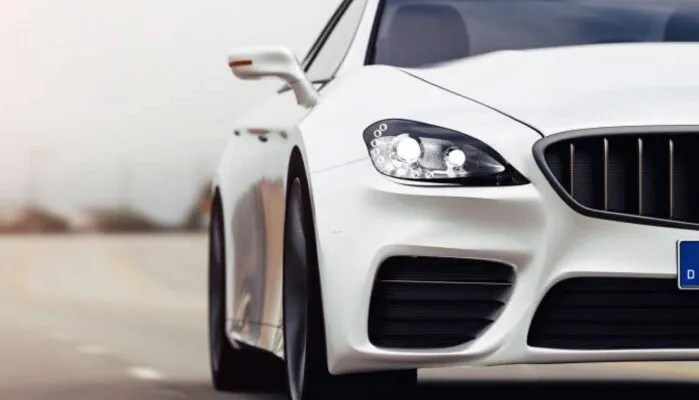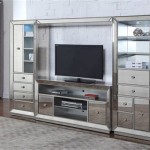Why Do We Use Concave Mirrors in Car Headlights?
The implementation of concave mirrors in car headlights is a carefully considered design choice driven by the need for effective and safe illumination. Headlights are not merely cosmetic features; they are critical safety components that significantly impact a driver's visibility, especially during nighttime driving or in adverse weather conditions. The properties of concave mirrors, specifically their ability to focus light, make them uniquely suitable for this application. Understanding the physics behind light reflection and how it is manipulated by concave mirrors provides insight into this engineering decision.
A concave mirror, also known as a converging mirror, is designed with a reflective surface that curves inward. This curvature is crucial to its function. When parallel rays of light strike the surface of a concave mirror, they are reflected and converge at a single point known as the focal point. The distance between the mirror's surface and the focal point is known as the focal length. This characteristic converging property is what allows concave mirrors to concentrate and direct light in precise ways, making them invaluable in various optical instruments and applications, including car headlights.
In the context of a car headlight, a light source, typically a halogen bulb, LED, or HID (High-Intensity Discharge) lamp, is positioned near the focal point of the concave mirror. The location of the light source relative to the focal point is carefully calibrated to control the beam pattern produced by the headlight. When the light source is placed exactly at the focal point, the rays of light emanating from it strike the concave mirror and are reflected as parallel rays. This results in a powerful, focused beam of light that travels a long distance without diverging significantly.
However, the positioning of the light source can be slightly adjusted to modify the beam pattern. If the light source is placed slightly behind the focal point, the reflected rays will converge slightly, creating a beam that is more focused at a certain distance. Conversely, if the light source is placed slightly in front of the focal point, the reflected rays will diverge slightly, creating a wider beam that illuminates a larger area closer to the vehicle. This flexibility in beam pattern control is essential for tailoring the headlight's performance to different driving conditions.
The brightness and intensity of the light beam are also directly related to the design of the concave mirror. The larger the surface area of the mirror, the more light it can collect and reflect. This is why car headlights often incorporate a relatively large concave mirror. Furthermore, the shape and smoothness of the reflective surface are critical in minimizing light scattering and maximizing the efficiency of the reflection. High-quality concave mirrors used in car headlights are meticulously engineered to ensure optimal performance and light output.
Beyond the fundamental principle of focusing light, concave mirrors also play a crucial role in minimizing glare for oncoming drivers. Careful design of the mirror and the light source ensures that the majority of the light is directed downwards towards the road, rather than upwards towards the eyes of other drivers. This is accomplished by controlling the angle of reflection and the shape of the beam. Modern headlight designs often incorporate additional features, such as shields or reflectors, to further reduce glare and improve overall visibility.
In addition to their primary function of providing illumination, concave mirrors in car headlights also contribute to the aesthetic design of the vehicle. The shape and size of the headlight assembly can be customized to complement the overall styling of the car. This is achieved by carefully integrating the concave mirror and light source into a visually appealing housing. Modern headlights often feature complex shapes and intricate designs that enhance the car's appearance while maintaining optimal performance.
The evolution of headlight technology has seen advancements in both the light sources and the mirror designs. From traditional halogen bulbs to more energy-efficient LEDs and high-intensity HID lamps, the light sources used in car headlights have become significantly brighter and more durable. Similarly, the design of concave mirrors has also improved, with the use of advanced materials and manufacturing techniques to create more precise and efficient reflectors. These advancements have resulted in headlights that provide superior visibility and safety while consuming less energy.
Key Points to Understand the Use of Concave Mirrors
1. Focusing and Directing Light
The primary reason concave mirrors are used in car headlights is their ability to focus and direct light into a concentrated beam. When a light source is placed at or near the focal point of a concave mirror, the light rays are reflected in a parallel or near-parallel manner, creating a focused beam that can illuminate the road ahead. This focusing effect is crucial for providing drivers with clear visibility, especially at night or in low-light conditions. Without the concave mirror, the light from the bulb would simply disperse in all directions, rendering it ineffective for illuminating the road.
The shape of the concave mirror is carefully designed to optimize the focusing effect. The curvature of the mirror determines the focal length, which in turn affects the beam pattern. A shorter focal length results in a more tightly focused beam, while a longer focal length produces a wider beam. The specific focal length and curvature used in a car headlight are chosen to provide the optimal balance between beam intensity and beam width, ensuring that the road is adequately illuminated without causing excessive glare to oncoming drivers.
Furthermore, the smoothness of the reflective surface is essential for maximizing the efficiency of the focusing effect. Any imperfections or irregularities in the surface can cause light scattering, which reduces the intensity and focus of the beam. Therefore, concave mirrors used in car headlights are typically made from highly polished materials to ensure a smooth and reflective surface.
2. Minimizing Glare
Another important reason for using concave mirrors in car headlights is to minimize glare for oncoming drivers. Glare occurs when excessive light is directed upwards towards the eyes of other drivers, causing temporary blindness and potentially leading to accidents. Concave mirrors help to minimize glare by directing the majority of the light downwards towards the road, rather than upwards towards the sky.
This is achieved by carefully controlling the angle of reflection of the light rays. The concave shape of the mirror ensures that the light is reflected downwards, while the positioning of the light source relative to the focal point further influences the beam pattern. In addition, many car headlights incorporate shields or reflectors that block light from being emitted in certain directions, further reducing glare.
The use of concave mirrors in conjunction with other glare-reducing technologies allows car headlights to provide effective illumination without compromising the safety of other drivers. This is particularly important in modern vehicles, which often use high-intensity light sources that can produce significant glare if not properly controlled.
3. Enhancing Light Output and Efficiency
Concave mirrors also play a significant role in enhancing the overall light output and efficiency of car headlights. By focusing and directing the light, the concave mirror allows the headlight to produce a brighter and more intense beam than would be possible with a simple light source alone. This is particularly important for improving visibility in challenging driving conditions, such as heavy rain or fog.
Furthermore, the use of a concave mirror can improve the efficiency of the headlight by minimizing light loss. Without a mirror, a significant portion of the light emitted by the light source would be wasted, as it would simply disperse in all directions. The concave mirror captures this light and redirects it towards the road, increasing the overall amount of light that is available for illumination.
The efficiency of the concave mirror is also influenced by the material it is made from. High-quality mirrors are typically made from materials that have a high reflectivity, ensuring that a large percentage of the light is reflected rather than absorbed. This helps to maximize the light output of the headlight and improve its overall efficiency.
In summary, the implementation of concave mirrors in car headlights represents a crucial design element that contributes to enhanced safety and visibility. These mirrors play a multifaceted role, ranging from focusing and directing light to minimizing glare and maximizing light output. Understanding the inherent properties of curved mirrors, especially their ability to converge light rays, is essential to appreciating their pivotal function in automotive lighting systems.

Car Headlights

Why Headlights Used Concave Mirror

How A Concave Mirror Is Used In Headlights And Searchlights To Throw Light At Long Distance Homework Study Com
Flashlights And Car Headlights All Have Concave Mirrors Why Would It Not Be A Good Idea To Use Convex Mirror Instead Quora

Concave Vs Convex Mirrors In Cars

Which Mirror Is Used In The Headlights Of A Car

Why Concave Mirror Used In Headlights Brainly
Why Are Concave Lenses Used In The Headlights Of A Car Quora

Convex And Concave Mirrors In Cars

State The Type Of Mirrors Used For I Headlights And Ii Rearview In Cars Motorcycles Give Reason To Justify Your Answer Each Case








